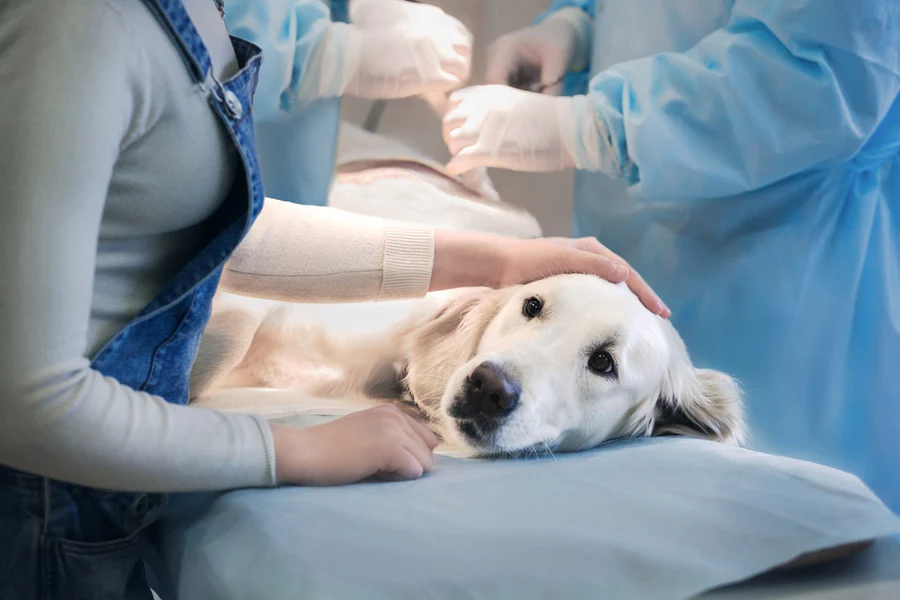
If you’re an avid petter of your dog, noticing a lump on their skin might raise concerns. When is it time to call the vet? Skin lumps on dogs can have various origins, from benign causes like hives due to allergies, lipomas, and warts to more serious issues like melanomas and mast cell tumors (MCTs). It’s crucial to have any new lumps checked promptly by a vet to rule out potential malignancy and prevent possible spreading.
What Is A Mast Cell Tumor?
Mast cells, integral to the body’s connective tissues, contain histamines responsible for allergic reactions. MCTs arise when the division of these cells becomes uncontrolled, forming tumors in the skin and other areas. This form of skin cancer can spread to lymph nodes, bones, and internal organs, affecting dogs of any age, sex, or breed, although certain breeds have a higher predisposition.
All MCTs are cancerous, but their diverse appearances, often mistaken for benign issues, make them challenging for pet parents to identify without veterinary assistance.
What Does A Mast Cell Tumor Look Like?
Mast cell tumors present varying appearances, resembling common lumps found on dogs. These can appear anywhere on the body, ranging in size and texture. Unlike benign issues, MCTs don’t spontaneously disappear and may change in size or appearance over time.
Symptoms of Mast Cell Tumors In Dogs: Symptoms can vary, and some dogs may not exhibit any signs beyond the presence of skin lumps. It’s advised not to handle these lumps extensively, as it may trigger degranulation, leading to complications such as stomach bleeding, swelling, redness of the tumor, drops in blood pressure, and shock. Common symptoms include:
- Scratching, licking, or biting the surrounding skin
- Vomiting
- Diarrhea
- Bloody stool
- Lethargy
- Decreased appetite
- Swollen lymph nodes
The primary symptom remains the appearance of a newly formed or changing skin mass.
Dog Breeds More Susceptible To Mast Cell Tumors
While MCTs constitute 20% of all dog skin tumors, their exact cause is unknown. Certain breeds, however, face a higher risk, including Golden Retrievers, Labrador Retrievers, Pugs, Boxers, and Boston Terriers.
Diagnosing Mast Cell Tumors In Dogs
Prompt vet examination is crucial when a lump is detected. Diagnosis involves fine needle aspiration, sampling local lymph nodes, abdominal ultrasound, and bone marrow cytology. Determining the tumor grade is essential for treatment planning.
Treating Mast Cell Tumors In Dogs
Treatment options depend on the tumor’s aggressiveness and location. Surgical removal is common, with about 80% of MCTs being low to intermediate grade. Alternatives include a second surgery, radiation therapy, and, in some cases, chemotherapy. Prognosis varies based on the tumor grade and treatment effectiveness.
Mast Cell Tumors In Dogs: FAQs
- How fast do mast cell tumors spread in dogs? Spread rates vary, with some growing slowly over time or rapidly. Timely treatment is crucial as untreated MCTs can be fatal within months.
- How serious are mast cell tumors? MCTs are highly serious but also treatable. Left untreated, they can lead to severe consequences, including shock and progression to higher-grade tumors.
- Can a dog recover from a mast cell tumor? Recovery is possible with proper treatment. Prognosis depends on the tumor grade and treatment effectiveness. Early diagnosis is key, as dogs with untreated MCTs can face fatal outcomes within months.
Final Notes
Early diagnosis and treatment significantly impact the prognosis of mast cell tumors in dogs. While highly treatable, prompt evaluation of new lumps is essential. Don’t dismiss any lumps, even if previously evaluated, as early detection enhances your dog’s chances of survival.